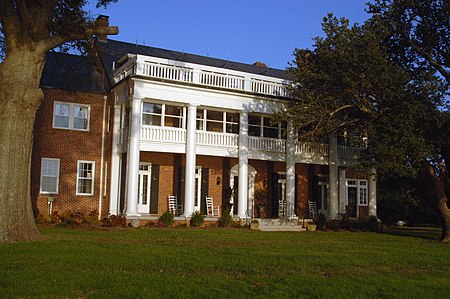Holly Knoll
Colonial Revival architecture in VirginiaHouses completed in 1935Houses in Gloucester County, VirginiaHouses on the National Register of Historic Places in VirginiaNational Historic Landmarks in Virginia ... and 2 more
National Register of Historic Places in Gloucester County, VirginiaUse mdy dates from August 2023

Holly Knoll, also known as the Robert R. Moton House, is a historic house in rural Gloucester County, Virginia, near Capahosic. It was the retirement home of the influential African-American educator Robert Russa Moton (1867-1940), and is the only known home of his to survive. It now houses the Gloucester Institute, a non-profit training center for African-American community leaders and educators. It was declared a National Historic Landmark in 1981.
Excerpt from the Wikipedia article Holly Knoll (License: CC BY-SA 3.0, Authors, Images).Holly Knoll
Leadership Drive,
Geographical coordinates (GPS) Address Nearby Places Show on map
Geographical coordinates (GPS)
| Latitude | Longitude |
|---|---|
| N 37.387808333333 ° | E -76.643858333333 ° |
Address
Leadership Drive
Leadership Drive
Virginia, United States
Open on Google Maps

